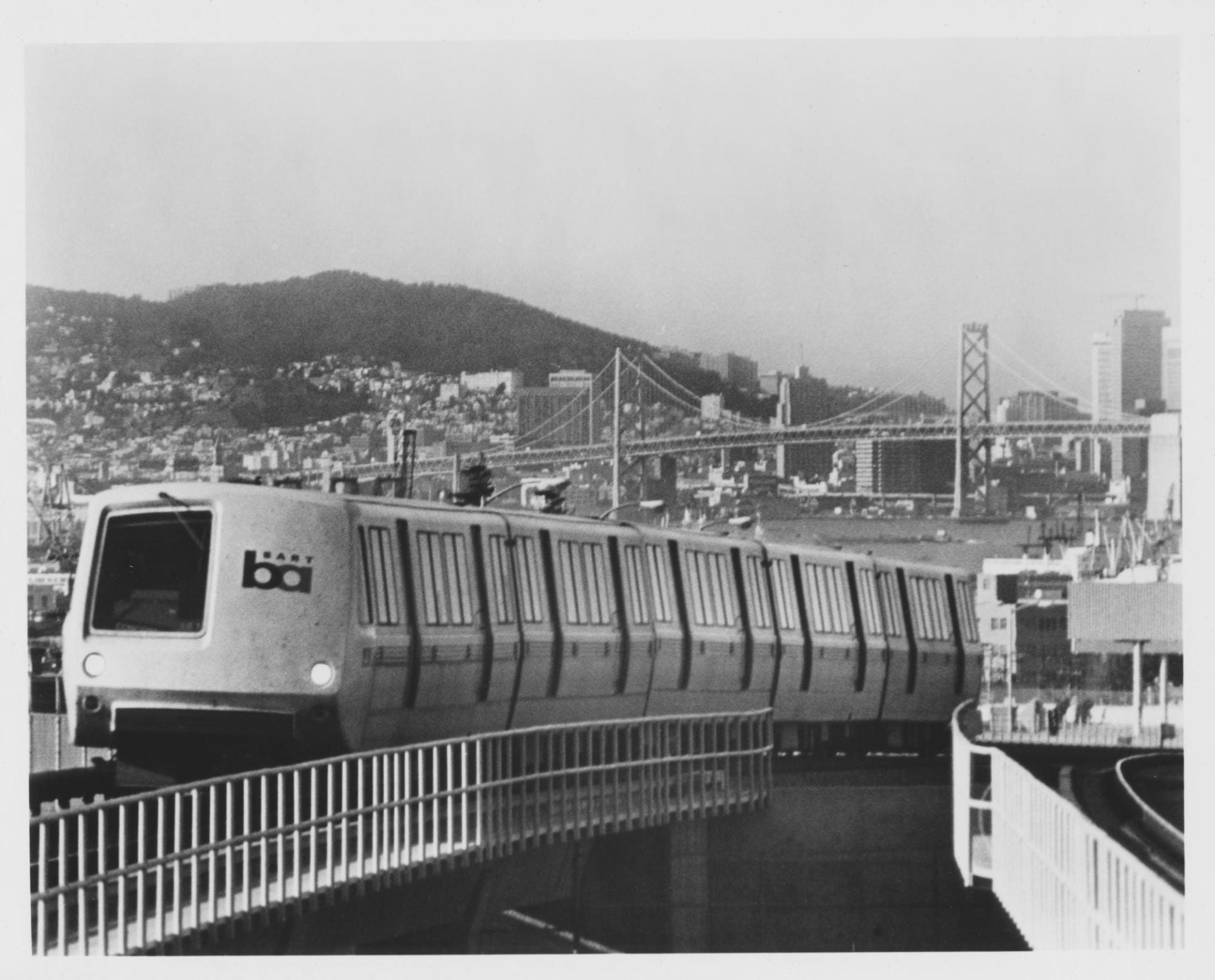Happy 50th Birthday, BART: Half a Century of Sustainable Transportation
While saving my phone battery on public transport, my favorite activity is reading the advertisements and Public Service Announcements from the City of San Francisco. Down at Powell Station, I read a sign that BART (the Bay Area Rapid Transit) is celebrating 50 years of operation. Public use began on September 11th, 1972 with more than 15,000 people riding on opening day! The announcement was paired with an image from BART’s early years, and I was intrigued to see how identical the rail car’s structure is to the BART we ride today. The future of transportation is being highly debated as natural resources used to fuel individual vehicles become increasingly scarce, its effects rapidly damaging both political and environmental climate. Public transportation is an incentivized solution, with highly populated cities having the most developed infrastructure for such services. Let’s explore some facts about SF’s relationship to public transportation and why this model is crucial for all cities to adopt.

Save $ and Carbon Emissions
Another eye-catching sign that I saw that day, in promotion of the BART system, said that “Taking BART somewhere every day for one month emits less CO₂ than driving there just once”. I was shocked to realize and evaluate the carbon footprint of one BART ride versus taking an Uber back home (since I don’t have a car in San Francisco). Single occupancy vehicle use is responsible for the transportation sector’s mass carbon emissions, whereas public transportation, such as BART, reduces the emissions per passenger despite being a larger vehicle. In addition, San Franciscans are the most likely to spend money on ride sharing services in the country, spending up to $110 per month! (Statista 2018) If you’re looking to budget and sustain transportation, the most expensive round-trip BART ride will cost you $26, but round-trip rides are typically less than $13.
BART Routes Cover 60% of the Bay Area
The BART system began as an idea attempting to relieve traffic congestion from ample post-war migration and automobile increase in 1946. First discussed by the Army-Navy review board as a needed link between San Francisco and Oakland, the system now serves 17 communities in San Francisco, Alameda, and Contra Costa counties with its 50 stations. (Bay Area Rapid Transit) During the earliest processes in formulating a viable route, Marin and San Mateo policy makers opted out due to unwillingness for tax funding, making them the only Bay Area counties excluded from the BART system. Regardless, BART persists in extending travel throughout most of the region. If you’re looking for a new adventure out of SF city, BART is a great opportunity to utilize!
Future of Public Transportation
San Francisco prioritizes sustainable transportation options not limited to BART, as the government funds the San Francisco Municipal Transportation Agency (SFMTA). Such services include Muni bus transit, historic cable cars, and CalTrain. SF prides its notoriety in sustainable development, spearheading into a world greatly concerned with our lasting climate impacts. With 50% of the world’s population projected to live in cities by 2050, existing structures are called to reform their urban development, fulfilling societal demand while simultaneously maintaining a safe living structure. The United Nations emphasizes the public transportation aspect in their Sustainable Development Goal 11: Sustainable Cities and Communities, outlining strategies for cities to withstand population growth and dangerous weather conditions. The call for public transportation utilization and safety development is more crucial than ever, so take advantage of SF’s prioritized sustainability efforts, especially when traveling in groups. Happy 50th Birthday BART! May there be many more to come!
Works Cited
Statista. “Average monthly spending on ride-sharing apps in the United States as of 2018, by city”. Statista, CNBC, May 2018, https://www.statista.com/statistics/823293/average-monthly-spending-ridesharing-united-states/
Bay Area Rapid Transit. “System Facts”. Bay Area Rapid Transit, Facts & History, https://www.bart.gov/about/history/facts


